A Closer Look At Netbooks On The Market
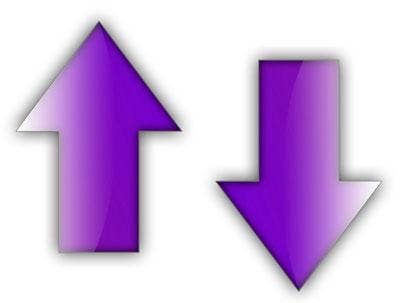
With a smaller form-factor and slightly less beefy specs, netbooks are selling. These slimmed-down notebooks are becoming more popular among mobile employees and educators. Light in weight, energy efficient and, perhaps most important, lower in cost, netbooks are designed for users who want to access some of the most important business and personal tools we have: e-mail and Web-based applications.
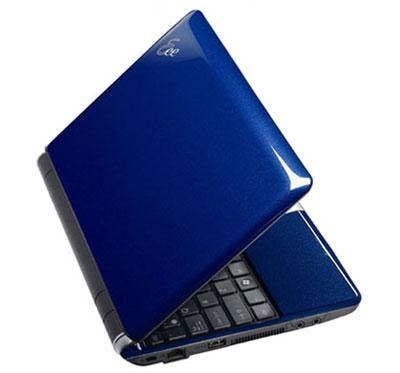
The Asus Eee PC 1000HE is designed for someone who travels frequently but still needs to have everyday business tools on hand. The Asus netbook is equipped with an Intel Atom N280 processor, which uses only 2.5 watts of power and provides up to 9.5 hours of computing time. Tipping the scales at 3.2 pounds makes the netbook easy to travel with, but the Eee PC still doesn't sacrifice much screen space with a 10-inch display. The Asus Eee PC 1000HE starts at $399.99.
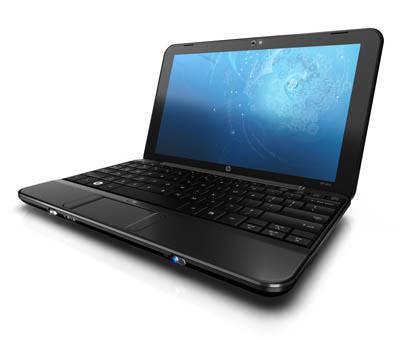
The HP Mini 1000 XP Edition netbook comes with the choice of 8-GB or 16-GB solid state hard drive or 60-GB standard hard drive and up to 1 GB of memory. At less than 1 inch thick, the netbook weighs a scant 2.3 pounds. It's designed specifically for checking e-mail, surfing the Web and using Windows-compatible applications. The keyboard on the Mini 1000 isn't full-size, instead being 92 percent the size of a standard keyboard. Users can expect to find the HP Mini 1000 equipped with an Intel Atom processor and Windows XP Home Edition. The HP Mini 1000 XP Home Edition retails for $399.
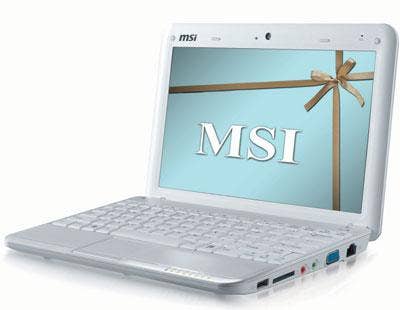
The MSI Wind U100 netbook takes the quality of its display seriously. The 10-inch display on the U100 features 1,024 x 600 resolution and comes equipped with an LED power-saving backlight technology. That means the display will appear crisper while not draining your battery on long flights. Because netbooks are smaller than regular laptops, Wind increases the space between keys to give the U100 a more natural feel while typing. Like most netbooks, the U100 is equipped with an Intel Atom chipset and 160-GB hard drive. The U100 has the 802.11b/g/n wireless all-region Web connection and Bluetooth, making mobile working easy. The MSI Wind U100 retails for $349.
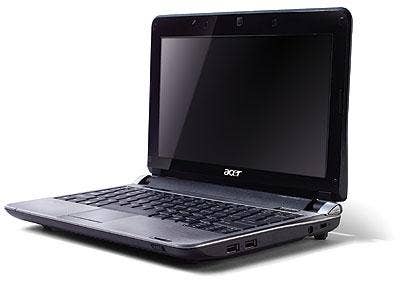
The Acer Aspire One AOD150 is Acer's first foray into the 10.1-inch form-factor netbook. An Intel Atom processor is par for the course -- in this case, it's the N270. A Mobile Intel 945GSE Express chipset also comes standard on the Aspire One. Its 160-GB, 5,400-rpm hard drive is accompanied by 1 GB of memory, providing plenty of room for the preloaded Windows XP Home operating system with Service Pack 3. The netbook comes with 802.11b/g Wi-Fi support as part of the standard package. A six-cell Li-ion battery provides six hours of constant computing, doubling the battery life of the previous version. An integrated Intel Graphics Media Accelerator 950 is part of the package.
Overall, the Acer Aspire One weighs 2.95 pounds and is available in four colors: seashell white, sapphire blue, ruby red and diamond black.
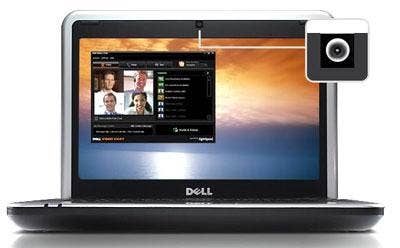
The Inspiron Mini 9 is Dell's foray into the market and packs a lot of features similar to other netbooks. But like all Dell products, customers can build their own, picking and choosing the options and upgrades they want, which will, of course, bring the price up. The chip in the machine is the Intel Atom N270. But rather than the option for a large standard hard drive, all models of the Inspiron Mini 9 come with solid state hard drives, starting at 4 GB and ranging up to 16 GB. The display is an 8.9-inch LED with 1,024 x 600 resolution. A wireless 802.11g mini card is standard for Web connectivity.
The base model comes with Ubuntu Linux version 8.04.1 but can be upgraded to Windows XP Home edition. Currently, Dell is offering rebates ranging from $40 to $350 with a two-year service contract. The Dell Inspiron Mini 9 starts at $349, depending on the model.
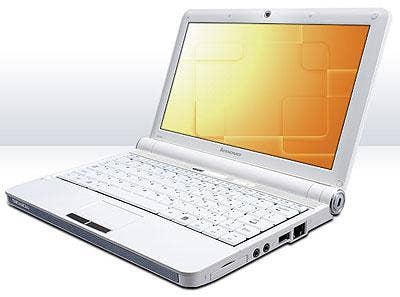
The Lenovo IdeaPad S10 is designed to be a netbook that packs the features of a regular PC into a smaller form-factor. The display is a 10.2-inch LED backlit WSVGA screen. The keyboard is designed to save space while offering the same comfort afforded by a full sized QWERTY keyboard. It's powered by an Intel Atom processor, like most others, with an emphasis on lower power consumption and reliable performance.
Unlike some other netbooks, Lenovo has included an Intel Graphics Media Accelerator and Intel High Definition Audio, standard. Lenovo's OneKey Rescue System also is standard, allowing you to restore the system and data with a single button click in case the unimaginable happens. The IdeaPad S10 also is engineered to reduce temperatures in areas like the palm wrests, keyboard, track pad and underside to make the whole experience a little cooler. The IdeaPad S10 starts at $349.
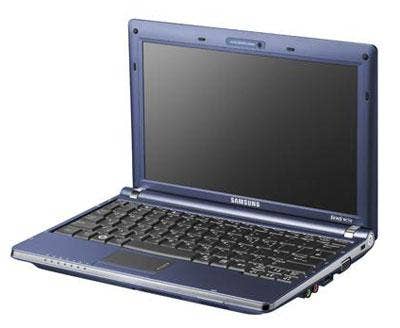
The Samsung NC10-14GB takes advantage of its Intel Atom processor by equipping the netbook with a 6-cell Lithium battery that offers up to six hours of continuous use. The 160-GB hard drive and 2 GB of maximum system memory are par for the netbook course, but offer plenty of space to power Windows Vista Home or Windows Vista Business that Samsung recommends for the netbook. An integrated camera takes shots at 1.3 megapixels.
The NC10 also has a built-in 3W stereo speaker and a 10.2-inch display. This netbook does offer a wired Ethernet LAN and wireless LAN capabilities along with Bluetooth 2.0 +EDR. The Samsung NC10 starts at $499.
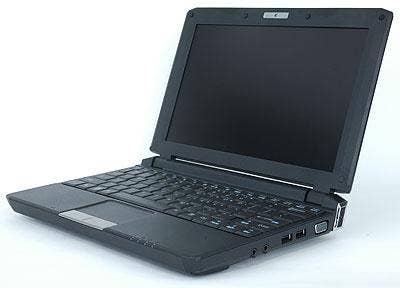
Monitor maker ViewSonic has jumped into the netbook game with its VieBook. With an Intel Atom 1.6GHz processor and 160 GB of memory, its specs are more or less par for the course. Because netbooks are aimed at travelling professionals, the VieBook comes with a 10/100 Ethernet LAN, 802.11b/g Wi-Fi and Bluetooth connections. Microsoft Windows XP Home edition is standard.
One spot where the VieBook lacks, however, is battery life. While most netbooks shoot for a six- to seven-hour battery life, the VieBook only clocks in at about three hours. Available in February, the VieBook starts at $429.
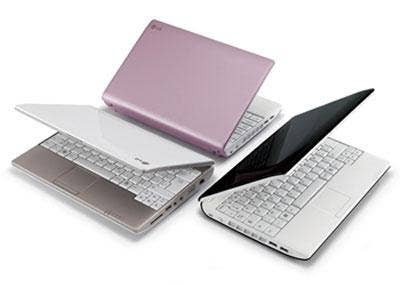
Even companies that don't traditionally produce notebooks are getting in on the netbook craze. Like ViewSonic before, LG also is offering a netbook. One of the major selling points of the LG X 110 is its built-in 3G connectivity, allowing the netbook to function anywhere that has a good wireless infrastructure. Customers will be able to pick the size of their hard drive, which can be 80 GB, 120 GB or 160 GB. An Intel GMA 950 graphics card complements the Mobile Intel 945 Express chipset. A built-in Webcam comes standard on the LG X 110 and a three- or six-cell battery rounds out the Windows XP Home netbook. Pricing and availability are not yet available for the LG X 110 netbook.
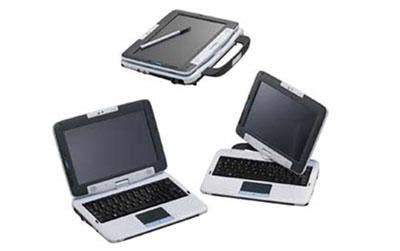
The Computer Technology Link Convertible Classmate PC is a slick little netbook that turns into a tablet PC with touch-sensitive controls. With a 1.6GHz Intel Atom processor and 16-GB hard drive, the CTL Classmate has the expected netbook stats. It weighs less than three pounds and is only 9.5-inches wide. Additionally, the Classmate PC has two USB 2.0 ports, a microphone-in jack and external headphone jack. A six-cell battery gives the netbook about five hours of productivity. Because the display can twist and turn, the Classmate PC has a built-in accelerometer that senses orientation and automatically switches between portrait and landscape mode.
Currently, the CTL Classmate comes with Windows XP Home installed, but will support Linux sometime later in 2009. The CTL Convertible Classmate PC starts at $499.